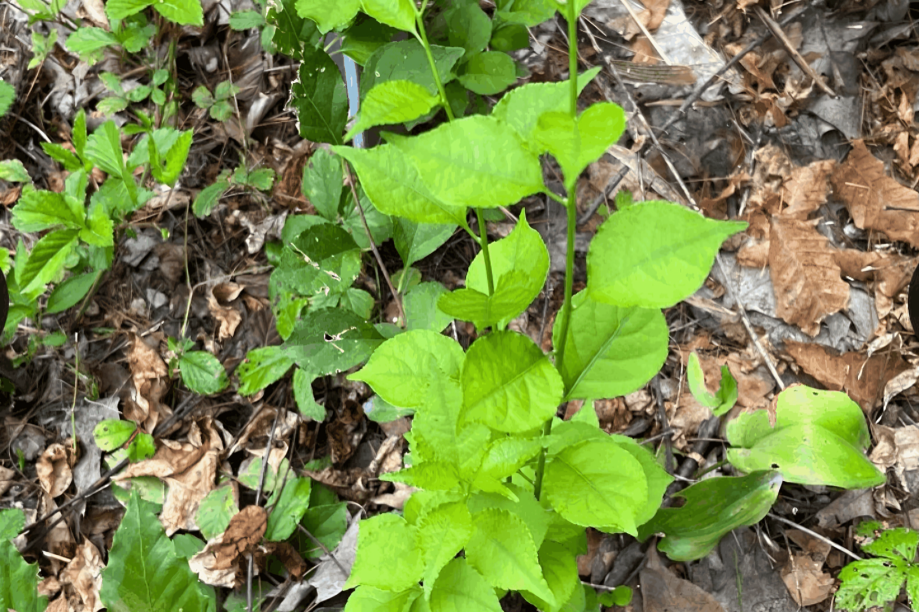Oriental Bittersweet is not a native plant of the United States and has become an invasive species which threatens native ecosystems. This vine is often found along roadsides, fence lines, woodlands and meadows. While this vine prefers full sun, young plants may be found in shaded areas but will wind around trees as they seek out sun and form a dense woodland canopy. Vines may reach 10 inches in diameter and are brownish or gray in appearance. Berries start out green and change to a bright yellow-orange. The skin of the berries splits open and may remain on the vine through winter.
This woody, deciduous, perennial vine is extremely aggressive. In many areas this vine has become a significant problem smothering native vegetation and strangling trees. There are many websites that will help identify oriental bittersweet at all stages and throughout various seasons for your area. Consider contacting an expert in your area for guidance, removal and disposal.
Early detection is key to controlling invasive oriental bittersweet.
For young plants gently pull the vine along with the root when the soil is moist while wearing gloves. This is the most effective way to eradicate invasive oriental bittersweet_._ A less effective control is mowing often along with possible herbicide treatments. New growth is bright green with flexible stems. All parts of the vine, including the berries, are toxic to humans and may cause mild to severe reactions. It is best to wear gloves and make sure hands are washed with Dawn soap and clean sponge after handling. Products used for poison ivy are not believed to be as effective.
For more mature vines, detach entangled bittersweet from trees if possible and cut roots a few inches from the ground. Covering the root will only temporarily inhibit growth and is not likely to eradicate oriental bittersweet. Applying herbicides to the cut stem will help prevent new suckers. The area should continue to be rechecked and treated as necessary.
For larger areas or mature infestations pulverizing unwanted vegetation like ornamental bittersweet may be best managed through forest mulching.
Disposal.
To properly dispose of Invasive bittersweet dry and burn vines in a brush pile following local regulations and after securing any required burn permits. You may also seal vines and berries in a dark plastic back and bake in the sun. Do not compost as it can regrow from seeds and root segments. Be sure to wash your hands and outside work-clothing separately as you should for any outside yard work.

